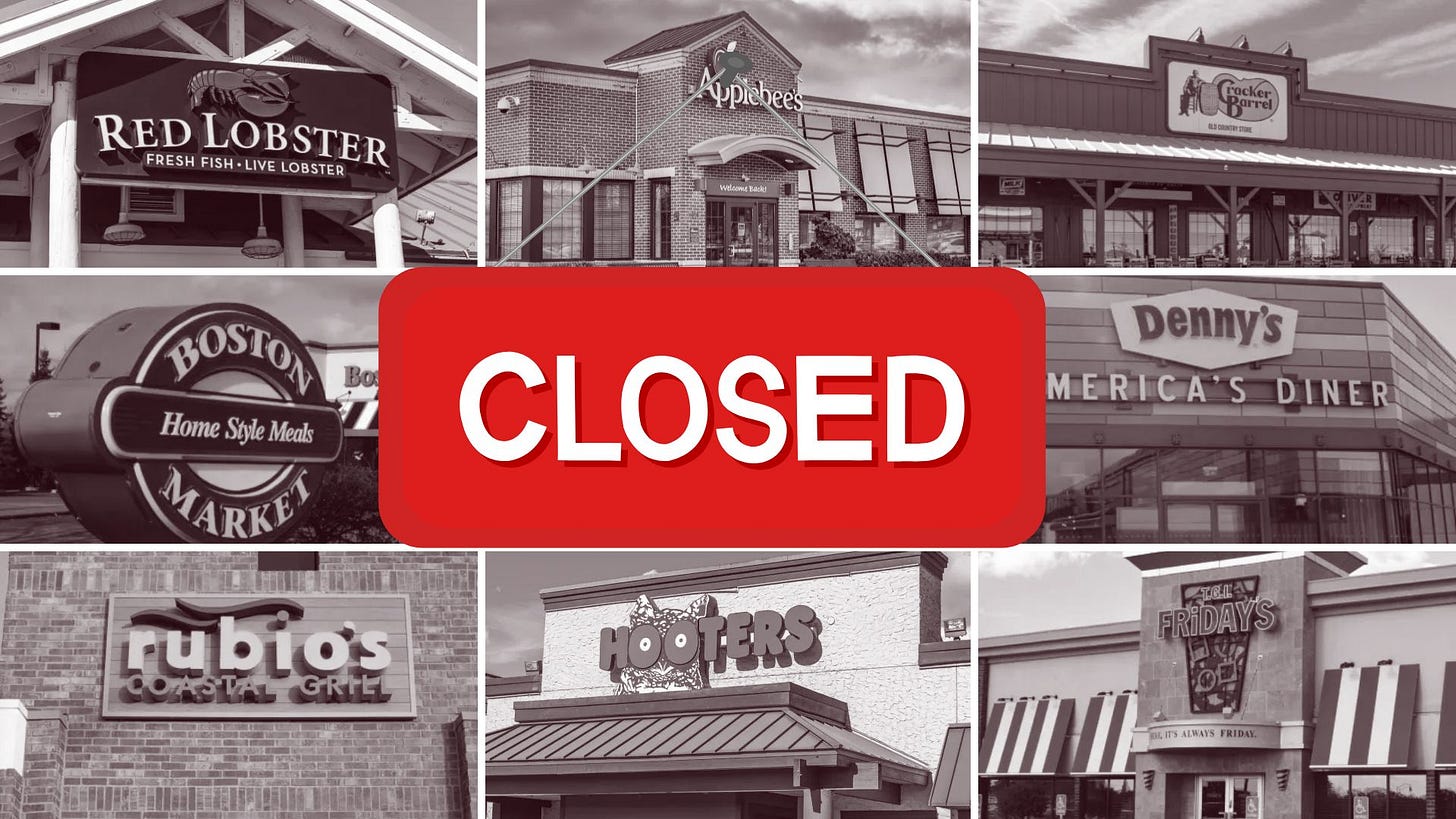Inflation is reshaping the way America eats out
Dr. Peter C. Earle of the American Institute for Economic Research joins the Collapse Life podcast to talk about the vicious economic cycles leading to a deluge of restaurant closures.
Dining out — that long-standing American tradition — is facing a host of unprecedented challenges. With well-known restaurant chains like TGI Fridays and Boston Market closing their doors, many have even dubbed what’s happening a “restaurant apocalypse.” What was once a staple of American social life is now under siege from multiple economic forces.
In the most recent episode of the Collapse Life podcast, host Zahra Sethna gets a broad overview of what’s going on from Dr. Peter C. Earle, a senior research fellow at the American Institute for Economic Research. The discussion paints a grim picture of the future for many restaurants, especially those that are small or independently owned. However, the conversation also explores the broader implications of these changes for the American economy and society.
Dr. Earle explains that this trend began during the COVID-19 pandemic, with lockdowns forcing many restaurants to close temporarily or even permanently. However, the real killer has been the persistent inflation that followed. Rising costs for food, fuel, and labor have made it difficult for restaurants to turn a profit, while at the same time consumers are finding it increasingly unaffordable to eat out. This creates a vicious cycle — fewer customers lead to higher prices, which in turn drive away more customers.
What makes this “restaurant apocalypse” particularly concerning is its potential to affect the broader economy. The restaurant industry is a significant employer, particularly for low-wage workers. As more establishments close, unemployment in that sector is likely to rise, further reducing consumer spending and exacerbating economic decline. Dr. Earle likens the situation to the economic turmoil of the late 1970s and early 1980s, although he notes that today the restaurant industry plays an even larger role in the economy. The health of this sector is often a bellwether for consumer confidence and economic stability, meaning that its struggles could signal deeper issues ahead.
A key takeaway from the discussion is the difference between inflation slowing down and prices actually dropping. Even as inflation rates decrease, prices are still rising — just at a slower pace. For restaurants, which operate on razor-thin margins, this means ongoing financial pressure. The recent increases in minimum wage across many states have only added to their woes, making it even harder for small businesses to survive.
In response to these challenges, some restaurants are turning to automation and other innovations to cut costs. For instance, dynamic pricing — where prices fluctuate based on demand — one strategy being explored. However, this has proven unpopular with consumers, highlighting the delicate balance restaurants must strike between profitability and customer satisfaction. The use of apps to offer personalized pricing is another trend on the rise, which could lead to a future where different customers pay different prices for the same meal, depending on their purchasing history.
Looking ahead, Dr. Earle predicts a polarized restaurant industry, where only high-end establishments and large fast-food chains thrive. Mid-range restaurants, which have traditionally been the backbone of the industry, may struggle to survive. This could lead to a loss of diversity in dining options and fewer job opportunities for those looking to enter the workforce. Moreover, the increasing use of data to tailor pricing and offerings could create a consumer landscape where loyalty to a brand is more important than ever.
The episode of Collapse Life with Dr. Earle is a sobering reminder of how interconnected our economy is and how changes in one sector can have far-reaching effects. For anyone concerned about the future of dining in America — or the economy in general — this discussion is a must-watch. As the restaurant industry faces unprecedented challenges, the choices we make as consumers and policymakers will determine its fate. Will we adapt and find new ways to support our favorite eateries, or will we watch as they become another casualty of the post-pandemic world?
Be sure to watch the full episode and subscribe to Collapse Life on YouTube or Rumble for more insightful discussions on the state of our world.



If you are going to eat out. I highly recommend A&W!
I think that there are only certain kinds of restaurant that are doomed by this trend.
The real losers will be the franchise establishments. The mediocre fare is not worth the extra expense. Subway and McDonalds are the prime examples. They were based on the idea that you could just buy a franchise, hire a bunch of kids at minimum wage (actually a fraction of minimum wage in many cases), and not even have an active role in the establishment and expect a profit.
As businesses go, restaurants have a pretty low bar for entry into the market. There are plenty of people that will step in to fill the gaps that will actually be less of a drain on the local communities. All the profit that goes to the franchise will stay in the community instead.